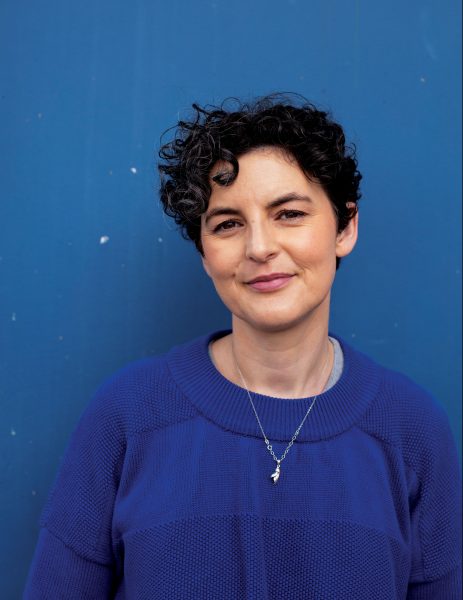Feisty septuagenarian
The seventy-fifth new zealand geographic is upon us, and it seems that we have raced from issue 50 to issue 75 in no time at all. In reality it has been more than four years, and in total New Zealand Geographic has been around for 17 years—quite a time by New Zealand magazine standards.
While we depend on subscribers and readers to ensure our viability, contributors are also essential. Authors and lead photographers are listed in the contents and on the title page of each article, however, a bevy of others also contribute photographs and illustrations and these are only mentioned in fine print in the credit beside each image.
I would like to make mention of some of these less-heralded but still vital contributors. Some articles are more difficult to illustrate than others, and the paleoclimate story in this issue is an example. The first image to be recognised as a photograph was exposed in 1826—unhelpful when you want to look back 50 million years!
I decided that scientific activity relating to retrieval of ancient climate information could be interesting, in particular, cores drawn from either the seabed or deep ice deposits in Antarctica and Greenland. Both these landmasses are dry, and annual precipitation is compacted into a centimetre or two of ice, generally marked by seasonal dust layers. Bubbles of ancient air are trapped in the ice and analysis of oxygen-isotope ratios in these can indicate temperature at the time of deposition. Where the ice is sufficiently thick (i.e. several kilometres), the record can go back hundreds of thousands of years.
New Zealand has not been involved in any ice coring so I had to look for images offshore. First success came with Geoffrey Hargreaves and Eric Cravens, curators of the US Geological Survey National Ice Core Laboratory, in Denver, Colorado. Ice cores are not easy or inexpensive to obtain and are held in a special cold-storage facility for the use of interested scientists. Hargreaves and Cravens help run the facility.
I then made contact with J.P. Steffensen and Katrine Krogh from the North Greenland Ice Core Project, based at the Niels Bohr Institute of the University of Copenhagen, who graciously made a wide range of photographs available. Between 1996 and 2003, their group co-ordinated the drilling through more than 3000 m of ice down to bedrock, thus obtaining detailed climate records for the last 125,000 years. More of their photographs can be viewed at http://www.glaciology.gfy.ku.dk/ngrip/index_eng.htm.
Images of deep ocean-bottom coring by Joides Resolution were obtained from the Ocean Drilling Programme, managed by Texas A&M University (http:www.iodp. org/home/), and a satellite image of Antarctica came from the National Snow and Ice Data Centre in Boulder, Colorado (http://nsidc.org/). Images were also obtained from Antarctica New Zealand (http://www.antarcticanz.govt. nz/), although in the end we didn’t use these.
For the grayling article, we obtained a photograph of a live Australian grayling from Rudi Kuiter, an underwater photographer in Victoria, and had the text checked by Tim Berra, an emeritus professor at Ohio State University, who also offered photographs of Australian fish.
How do we track down these people and organisations? Sometimes through personal contacts but more often by searching on the World Wide Web. Eight years ago the internet barely existed: today it is our primary research tool. Most significant organisations in the English-speaking world have web pages. Vast amounts of scientific information can be downloaded gratis. For instance, full scientific results of leg 181 of the Ocean Drilling Programme east of New Zealand can be freely downloaded from http://www-odp.tamu.edu/publications/181_SR/181sr.htm. A decade ago, such a document would have been held in two or three academic libraries around the country, available to others only through the tedious interloan process. Now anyone can get it. It is the same in all fields of endeavour—medicine, the arts, genealogy, travel, shopping, etc. With a modest computer and a telephone connection, you can access undreamed-of amounts of information from around the world without leaving your chair. Less scientific material is available free of charge in New Zealand than elsewhere—probably a reflection of the way our government science is set up in the form of profit-hungry companies.
World-wide, the often-maligned US government is perhaps the most generous donor of information. The bodies mentioned above are all US-government funded, and there are scores more. NASA, for instance, provides vast amounts of free information and spectacular photographs to the world, and New Zealand Geographic makes frequent use of its images.
Closer to home, while we often obtain contemporary photographs from commercial photo-libraries, our main source of historical images is the Alexander Turnbull Library, in Wellington. Few issues of New Zealand Geographic are without Turnbull images—in this issue they appear in the grayling and dance articles—and we are grateful to the busy staff of the library for their ever-helpful service. To an enterprise such as this magazine, records of the past are invaluable. So, although we are specifically “New Zealand” Geographic, our contributor tendrils run around the globe and back into the past.
We hope you enjoy this issue. I am particularly pleased with the range of articles.















